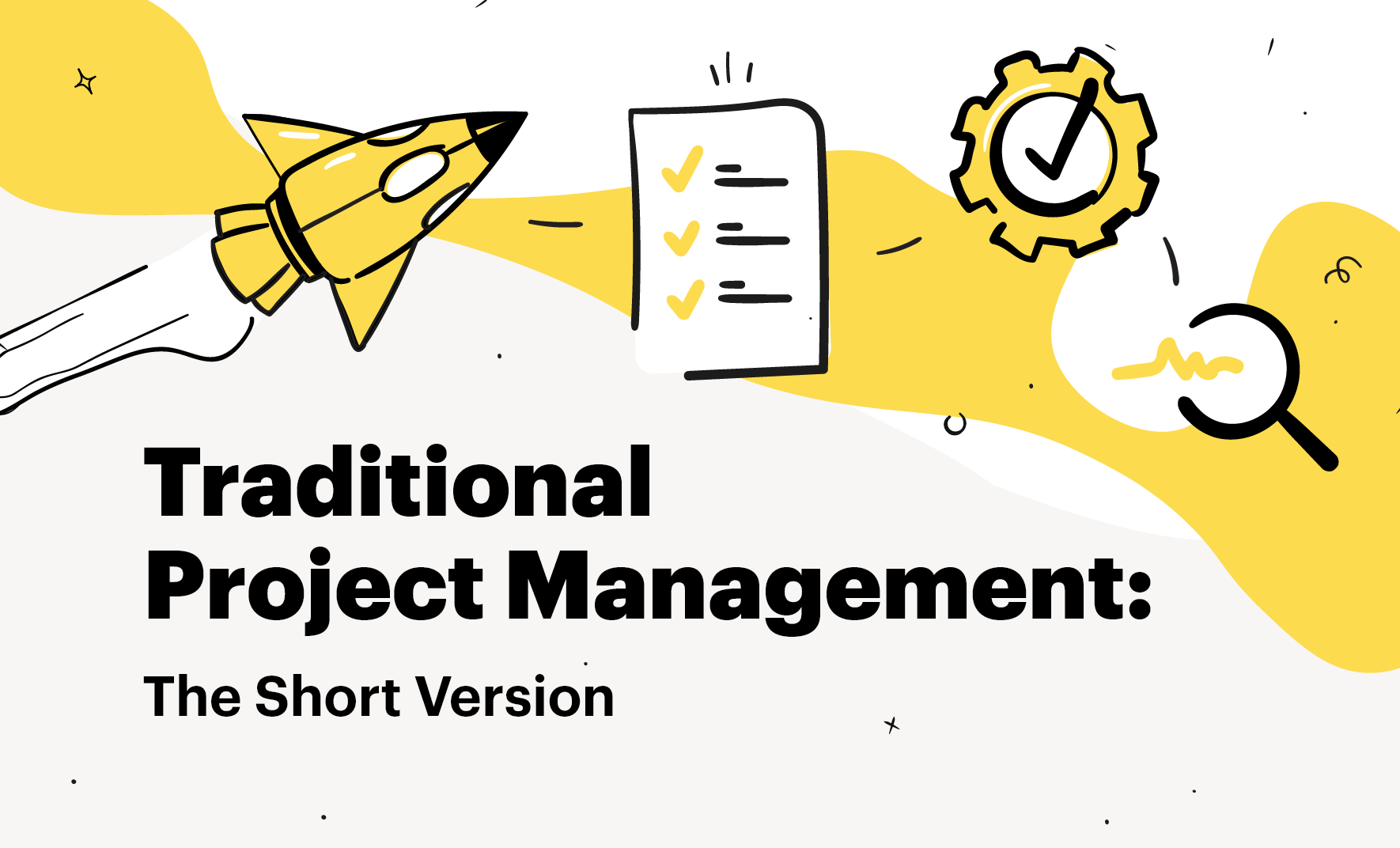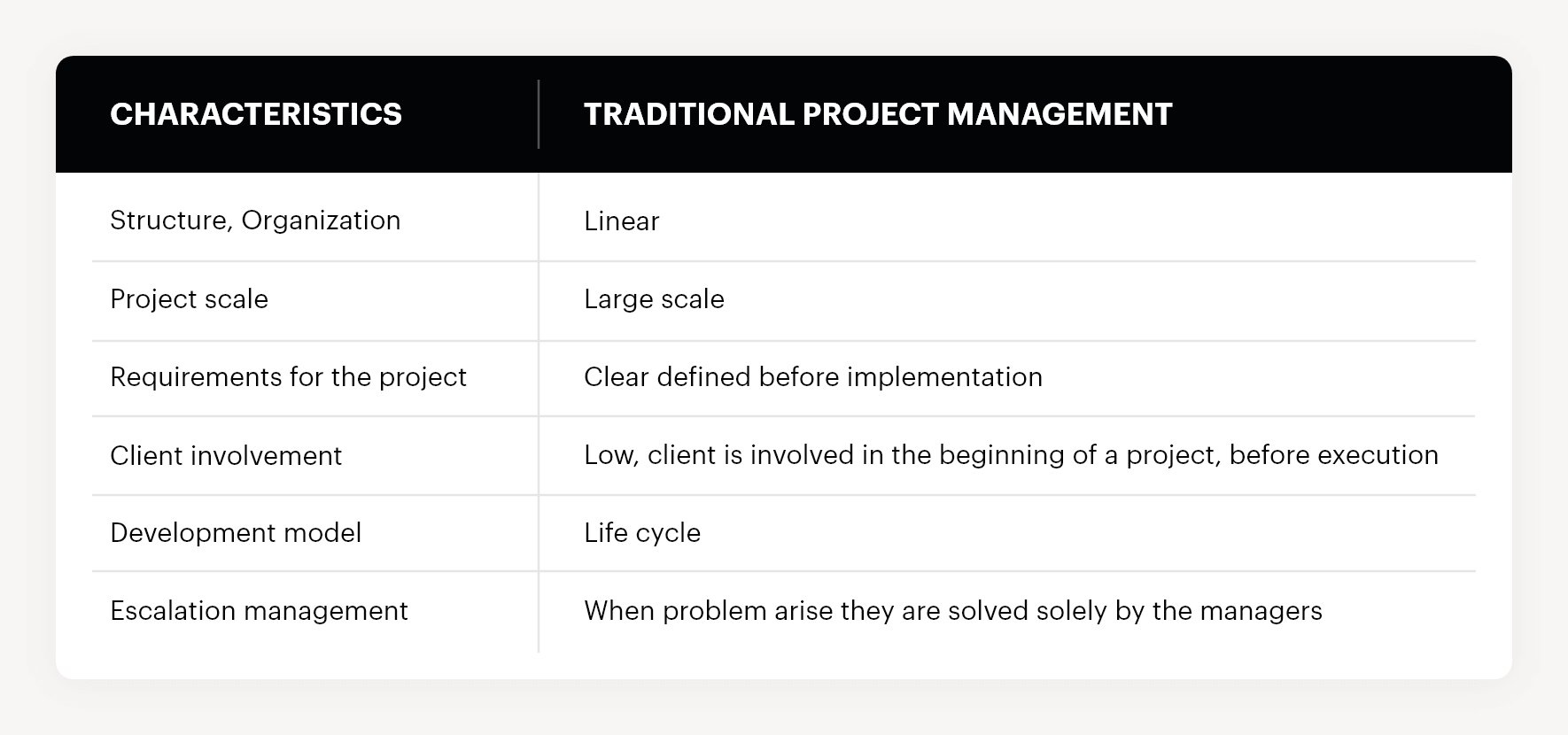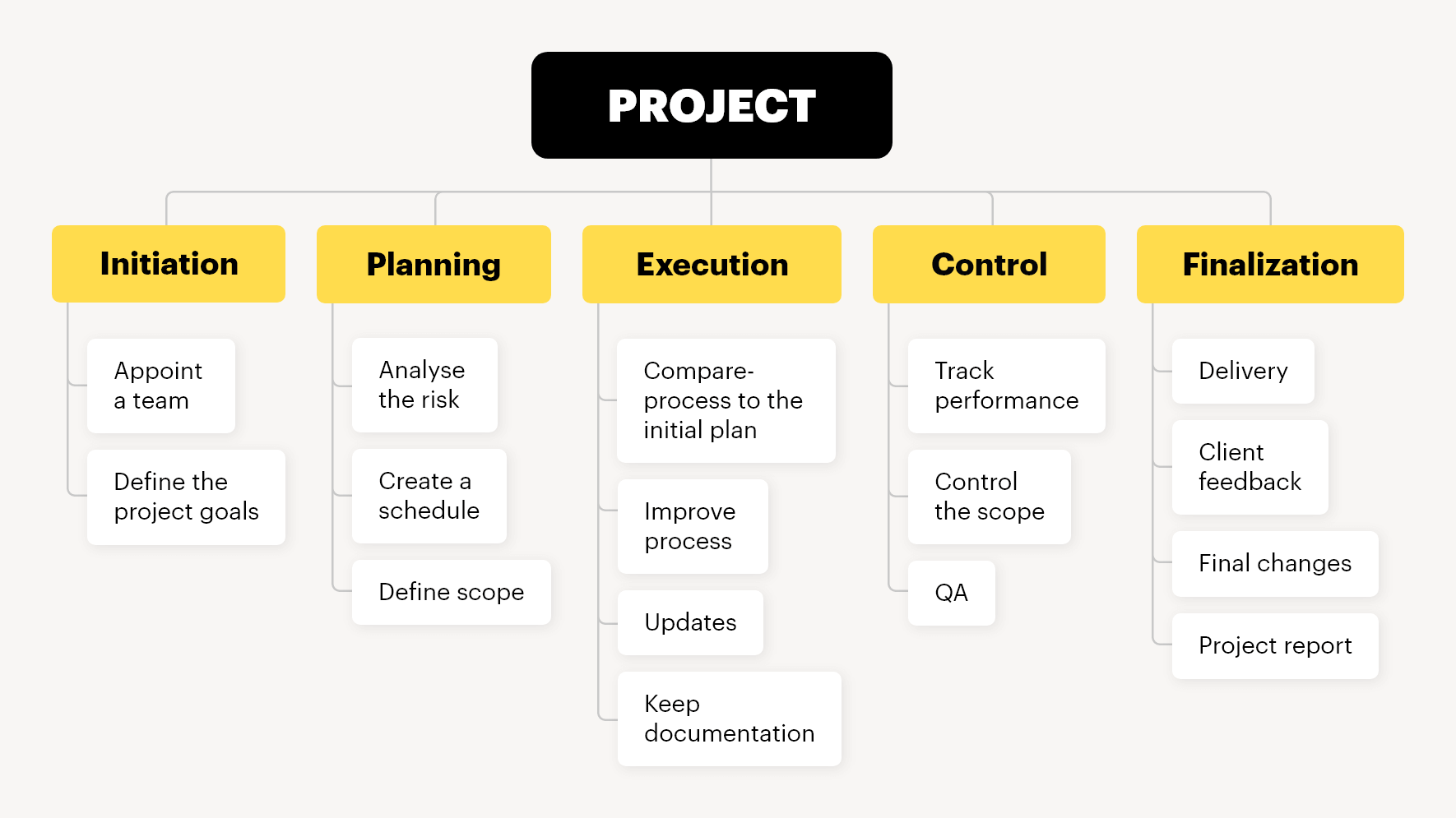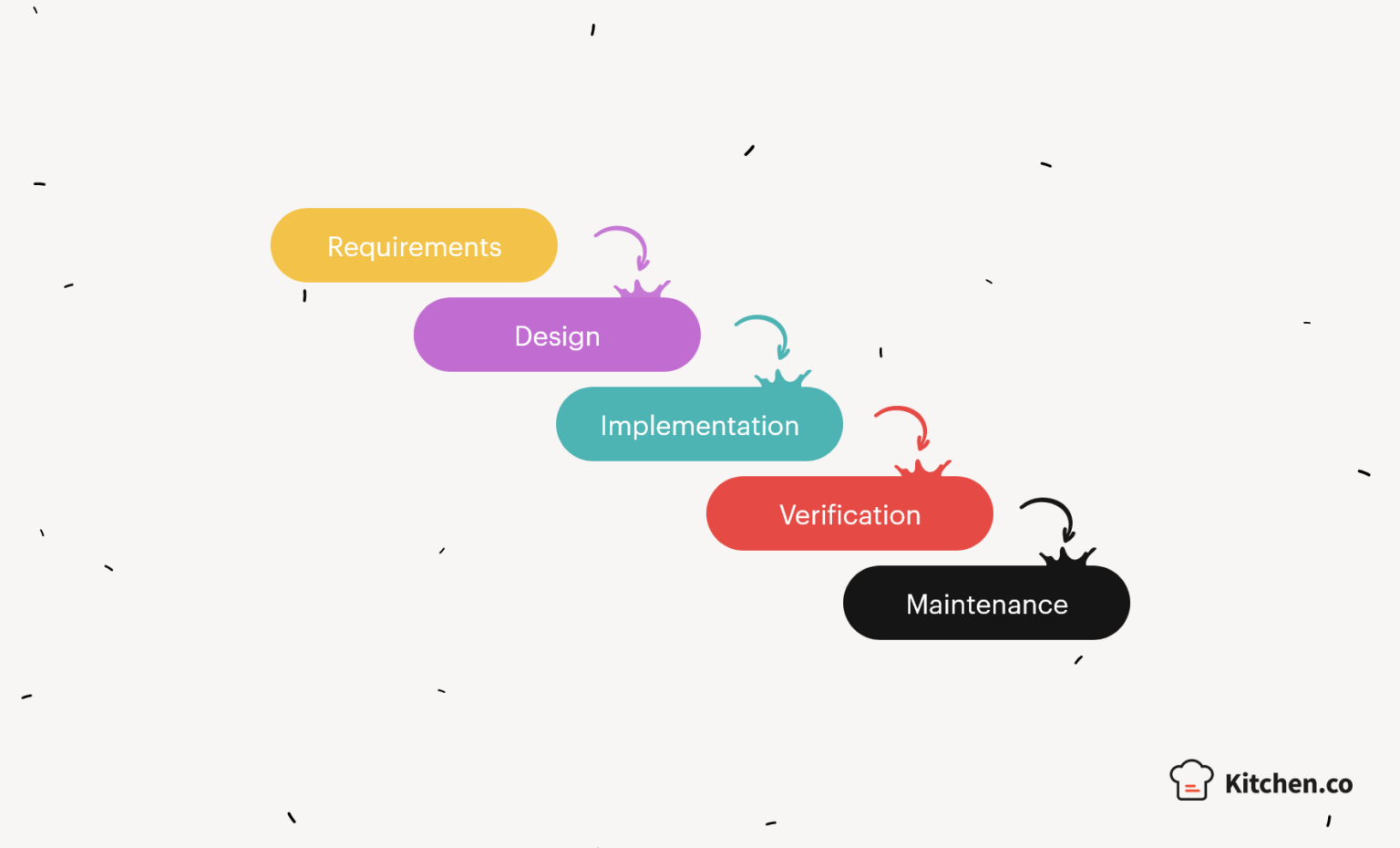Traditional Project Management: The Short Version

Project management was first introduced during the 1950s for business leaders to handle large-scale projects and keep up with the ever-changing technological development and demands of the market. The much-needed methodology was developed to make sure all tasks are carried out in a predetermined orderly sequence. With this in mind, today we’re going to expand on traditional project management in the 21st century as a foundation of all modern approaches and a system that still prevails in the workspace. Everything you need to know about traditional project management in a few minutes guide.
What is Traditional Project Management?
When we talk about traditional project management, we refer to a methodology of managing projects, where the individual parts of a project are following a fixed sequence: initiation, planning, execution, monitoring, and closure.
Traditional project management puts emphasis on linear processes, documentation, upfront planning, and prioritization.
There are tools and techniques defined by the standard methodology PMBOK® which are followed by project managers to reach the desired results on time and within budget. They are useful knowledge accumulated through time and the standards, described in the book are adopted by professionals around the world.
Although traditional project management has been around for quite some time now, its linear approach sometimes clashes with variables in time and budget. This is why it’s most efficient in large-scale projects where activities are clear, predefined, and completed in a sequence with a minimum of changes.
Let’s quickly have a look at a table with the main characteristics of this project management style:

Examples of Traditional Project Management
Let’s put ourselves in the following real-life situation. You are working for a company and assigned with a task to upgrade the operating system of the desktop and laptop computers from Windows XP to Windows 7 for 100 employees. Assume the company has 10 branches. It can easily become an overwhelming task, with lots of details and things to arrange.
The company can hire or use an existing project manager to manage the upgrade. You will plan the entire project, make a schedule, and point to the required resources.
Then, you will provide the cost for the upgrade to the higher management. You will know what processes and artifacts are required to execute the project and will participate in a risk management assessment. Since this type of project does not require any customizations, traditional project management is a great tool to handle the project.
The 5 Stages of Project Management
No matter the size or the type of project, if you handle it with traditional project management, you will run the process through 5 main stages.
The five stages of traditional project management are:
Initiation
Your project team establishes what the ultimate goal is, defines the objectives, and lists the requirements, deliverables, and possible risks that may occur. In this stage, the team explores and establishes everything from the ground before the project even begins.
- Establishing the ultimate goal
- Defining the objectives
- Listing the possible risks
Planning
With the initiation stage out of the way and all objects, requirements, and risks listed, the team goes in-depth and identifies the project activities. This includes the necessity for the project resources: which team member will be assigned to which task, the project budget and plans to manage the possible risks. Usually, by the end of this stage, the project manager prepares a Gantt chart with a simple overview of the tasks, activities, milestones, and timeline.
- Identifying the project activities
- Estimating the activities’ duration
- Determining necessary resources
- Developing and documenting a project plan
Execution
Time to put the plan into action and stick to the set schedule. The project manager will monitor the execution of each task, and keep tabs on its status.
- Carrying the project plan
- Regularly evaluating quality
- Organizing the project team
- Sharing and distributing information
- Scheduling and documenting work units/packages
Monitoring and Control
Similar to what happens during the execution phase, the project manager will also pay close attention to the quality, costs, and scope of the project.
- Controlling changes in scope
- Controlling costs
- Establishing a progress reporting system
- Revising and updating the project plan
Closing
The project manager presents the stakeholders with the final product and gets approval. This phase finalizes the project with an issued final report.
- Finalizing the execution stage and obtaining the client’s approval
- Getting feedback from the team
- Closing out the contract
- Creating a final report
- Making recommendations for future projects
You can easily apply these guidelines to any situation. These steps are the backbone, so to speak, of your project management.
Most Important Techniques and Tools
Work Breakdown Structure or WBS

WBS refers to a visual derivable-based project deconstruction in a hierarchical way. Same as any data visualization, this structure aims to break down a complex process into an easy-to-comprehend and follow chart. It outlines all the work needed to complete a project and breaks it down into steps. Think of it as a map of all phases, sub-projects, small tasks, and deliverables organized in a hierarchy right in front of you. Just by a quick scan, you can understand the project scope and quickly manage to allocate resources, avoid missed deadlines, and scope creep.
Gantt chart
A Gantt chart is a useful tool, helping you organize and easily see what work is scheduled to be done on a specific day, with start and end dates. The tool is useful for project planning, project management, and project scheduling.
Gantt charts allow you to have a quick overview of:
- start and end dates
- different tasks
- who is responsible for a task
- how tasks group, overlap, and link to each other
- how long each task will take
- task milestones and dependencies
Gantt charts are created in Excel or with project management software, also referred to as Gannt chart software.
Traditional project management – Waterfall method
The Waterfall method entails mapping out a project into distinct, sequential phases, with each new phase beginning only when the prior phase has been completed. The waterfall system is the most traditional method for managing a project, with team members working in a linear fashion. Unlike more flexible methodologies such as Agile, Waterfall does not allow going back and forth in different project phases.

1. Requirements
The first phase refers to gathering and understanding requirements as detailed as possible. Usually, the project manager writes them down in a document where they describe each stage of the project, the cost, timelines, dependencies, and risks.
2. Design
This stage communicates the technical solution based on the requirements. It includes the purpose and scope of the project and integration points. Think of it as the battle plan for the project before transferring it to physical design.
3. Implementation
During this stage, the team starts the technical implementation based on the requirements and specifications. In case there are significant changes that must be done, this often means going back to the designing stage.
4. Verification
Before you release the final product to the clients, you will need to test it and make sure it’s bug-free and all requirements are met.
5. Maintenance
Finishing the product and deploying it into the market isn’t the end of it. Now the maintenance part begins where you might need to do some changes, fix bugs, or make updates.
Advantages of traditional management method
The traditional approach works best with big and complex teams and projects. The methodology fits best in projects, where the requirements are clearly defined and understood by all parties from the beginning.
To summarize, traditional project management is best for:
- Big, complex teams and projects
- Projects with clearly defined requirements and result expectations
- Projects that can be carried out in a linear fashion
Disadvantages of traditional management method
When it comes to special environments and conditions, traditional project management has some disadvantages and you should look into modern methods that have been specifically developed for more dynamic cases.
For example, when developing new software, there are many uncertainties and often, one should go back to previous stages, revise, and then continue to the next stage. For that reason, the agile method is more suitable for such projects.
To summarize, traditional project management is not so good for:
- Projects with lost of uncertainties
- When developing new products/services
- When having lots of iterations
- Projects with new and/or specific conditions and environments
Final words
Traditional project management is still very popular to this day and it is tested over time. Although we don’t see it going out of style any time soon, there also new project management styles appearing on the scene. Still, traditional project management will be the best solution for large scale projects with little changes through the course of the project.
There are many useful books and guides, as we mentioned in this article and they can help you master this project management style.
We hope that this short article provided you with useful information on traditional project management and that it will get you going in learning more about it.